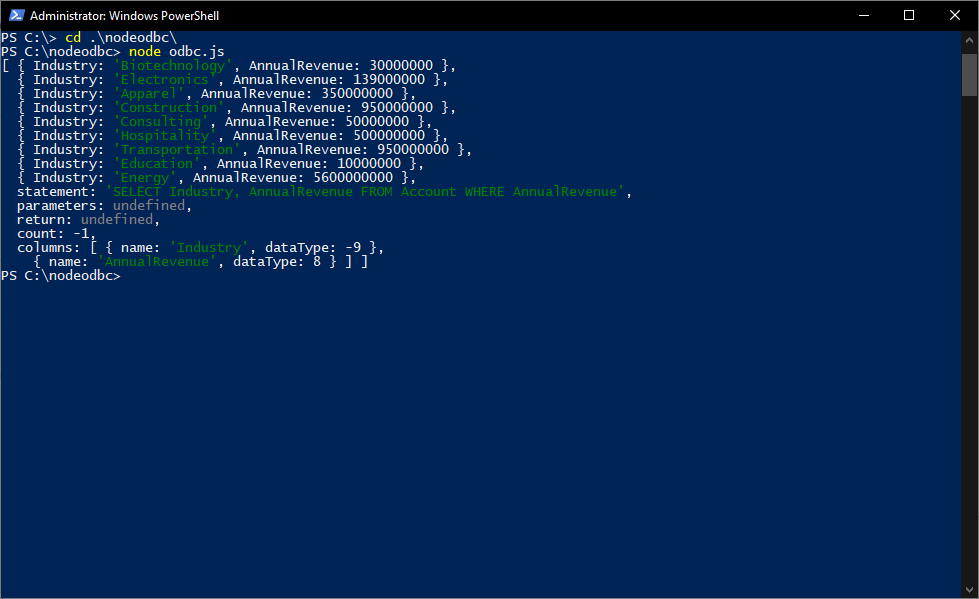Discover how a bimodal integration strategy can address the major data management challenges facing your organization today.
Get the Report →Query Active Directory Data through ODBC in Node.js
Use node-odbc to execute SQL queries against Active Directory data from Node.js.
Node.js is a JavaScript runtime environment that allows you to run JavaScript code outside of a browser. With the CData ODBC Driver for Active Directory, you can access live Active Directory data from Node.js apps and scripts. In this article, we walk through installing node-odbc and the required tools to create a simple Node.js app with access to live Active Directory data.
With built-in optimized data processing, the CData ODBC Driver offers unmatched performance for interacting with live Active Directory data in Node.js. When you issue complex SQL queries from Node.js to Active Directory, the driver pushes supported SQL operations, like filters and aggregations, directly to Active Directory and utilizes the embedded SQL engine to process unsupported operations client-side (often SQL functions and JOIN operations).
Connecting to Active Directory Data
If you have not already done so, provide values for the required connection properties in the data source name (DSN). You can use the built-in Microsoft ODBC Data Source Administrator to configure the DSN. This is also the last step of the driver installation. See the "Getting Started" chapter in the help documentation for a guide to using the Microsoft ODBC Data Source Administrator to create and configure a DSN.
To establish a connection, set the following properties:
- Valid User and Password credentials (e.g., Domain\BobF or cn=Bob F,ou=Employees,dc=Domain).
- Server information, including the IP or host name of the Server, as well as the Port.
BaseDN: This will limit the scope of LDAP searches to the height of the distinguished name provided.
Note: Specifying a narrow BaseDN may greatly increase performance; for example, cn=users,dc=domain will only return results contained within cn=users and its children.
Building node-odbc
In order to connect to Active Directory through the CData ODBC Driver, you need to build node-odbc manually (after installing the required tools).
Installing the Required Tools
The following commands install the tools required to build node-odbc (note the -g parameter, which installs the tools globally).
npm i -g windows-build-tools npm i -g node-gyp
Building node-odbc
After installing the required tools, create a directory for the Node.js app and install odbc (which builds the binary for us to use in our Node.js script).
mkdir nodeodbc cd nodeodbc npm i -g node
Querying Active Directory from Node.js
With the ODBC Driver installed, a DSN Configured, and node-odbc built, we are ready to query live Active Directory data from a Node.js app. The sample code below connects to a specific DSN and queries the User table.
myscript.js
const odbc = require('odbc');
async function queryActiveDirectory() {
const connection = await odbc.connect(`DSN=CData ActiveDirectory Source`);
const data = await connection.query('SELECT Id, LogonCount FROM User');
console.log(data);
}
queryActiveDirectory();
Once you write the app, use node to execute the script:
node myscript.js

Download a free, 30-day trial of the CData ODBC Driver for Active Directory and start working with your live Active Directory data in Node.js. Reach out to our Support Team if you have any questions.





